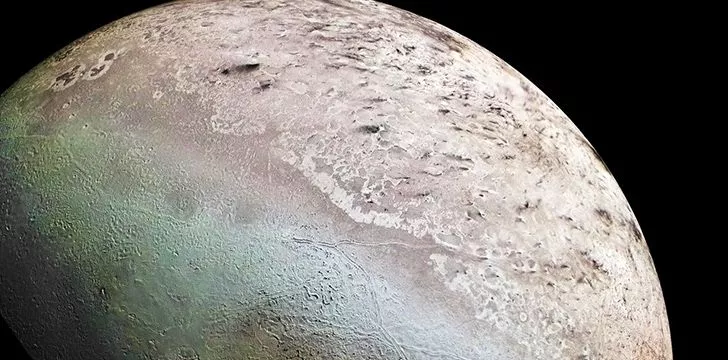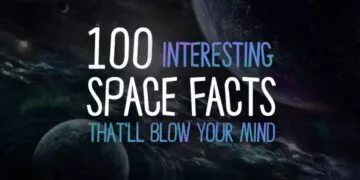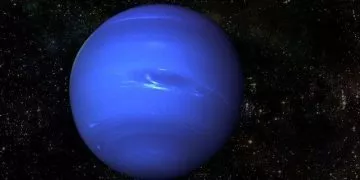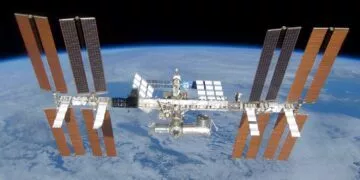At the far reaches of our solar system lies the ice giant Neptune. Devoid of life, lashed by supersonic winds and, well, just really, really cold, this planet does not mess around.
Not only does the blue giant Neptune have 6 rings, but it also has 13 known moons, so it’s no small wonder it has been referenced time and time again in science fiction and pop culture ranging from Dr. Who to Futurama.
Of all Neptune’s moons though, Triton is the most intriguing.
With a whopping diameter of 1,682 miles (2,700km) not only is Triton Neptune’s largest moon, but it’s also the 7th largest moon and the 16th largest known object within our solar system!
Discovered by British astronomer William Lassell on October 10, 1846, Triton is so great in size that it was actually found just a few weeks after the French Astronomer Alexis Bouvard discovered Neptune itself.
This moon isn’t just big though, it also has more than 99.5% of the total mass of all known bodies to orbit Neptune.
More than just a large moon, Triton has its fair share of bizarre and intriguing traits.
Triton was named after a sea god from Greek mythology.
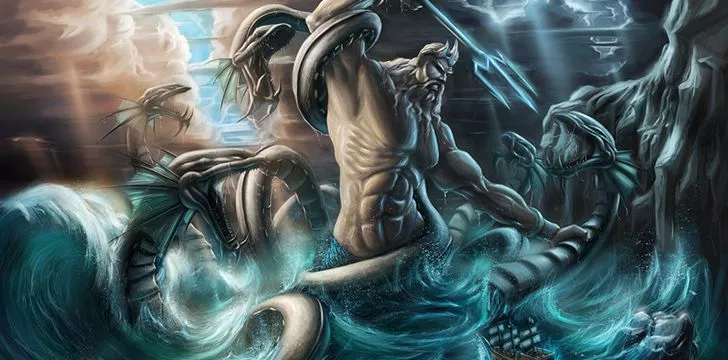
Officially, Triton was simply referred to as the satellite of Neptune until a second moon, Nereid, was discovered orbiting the planet in 1949.
While Neptune is named after the Roman god of the sea, Triton was named after a Greek one.
Although this may be confusing at first, its actually quite befitting, as Neptune is the Roman equivalent of the Greek god Poseidon, who just happens to be the father of Triton within Greek mythology.
It doesn’t just stop there though, as all of Neptune’s moons are actually named after characters from either Roman or Greek mythology as per the International Astronomical Union guidelines.
Triton has seasons, and they’re longer than you’d expect.
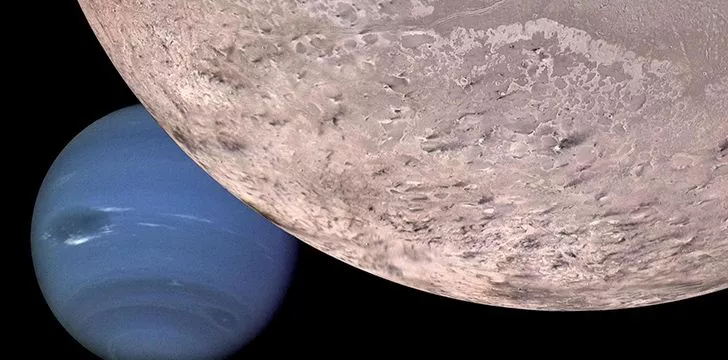
Despite the fact that Triton orbits the furthest planet in our Solar system, the sun still manages to have its presence felt.
Using the European Southern Observatory’s Very Large Telescope in Chile, scientists confirmed the theory that Triton has seasons in 2010. At that point in time, it was observed that summer was well under way, with the summer solstice occurring back in 2000.
During Triton’s summer the atmosphere thickens due to more direct sunlight, whereas in winter the atmosphere which is composed mostly of nitrogen, methane and carbon monoxide condenses and falls as snow.
If you don’t think that’s crazy then get this – Triton’s seasons last for 40 years!
So next time you’re about to complain about summer taking too long to end, think again!
Triton has a frozen crust.
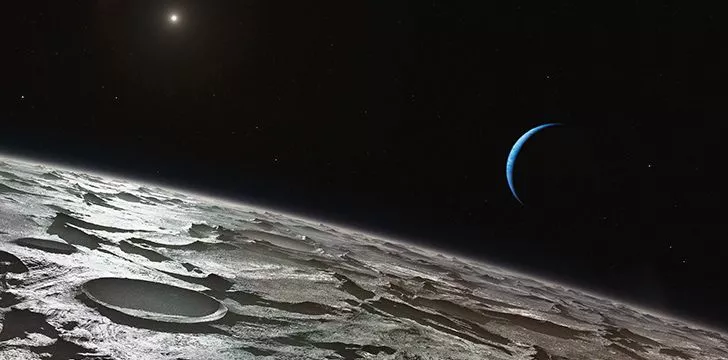
The 40% of Triton that has been mapped so far is covered by a frozen layer of nitrogen.
Due to this knowledge, it has been calculated that it is extremely unlikely for the remainder of Triton’s surface to be any different.
While the ice layer is primarily made up of frozen nitrogen, it also consists of frozen carbon dioxide and regular old ice.
The icy nature of Triton is the cause of its high albedo, which in other words means that it reflects between 60-95% of the light that reaches its surface.
For a point of reference, our own Moon reflects just a measly 11-12% of light.
Imagine standing on the surface of Neptune and seeing a full moon that’s as much as 10x brighter than ours!
Ice volcanoes are real, and found on Triton.
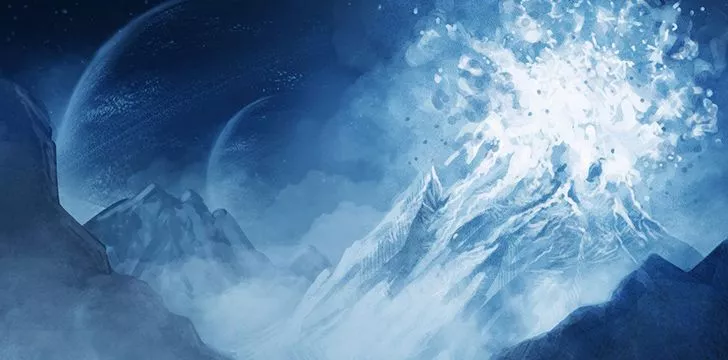
Yes, you heard it right, ice volcanoes.
Triton most likely has ongoing tectonic and volcanic activity, which is evidenced by the rift valleys and pressure ridges which scar the moon’s surface.
This activity results in endogenic geological processes which is subsequently the cause of the multitude of ice volcanoes scattered across the surface.
Technically referred to as cryovolcanoes, this type of volcano is almost isn’t as strange as you’d expect, either.
Aside from one spewing out molten lava and the other discharging water ice and ammonia, ice volcanoes and the lava volcanoes as found on earth are almost identical in nature.
Triton has geysers erupt nitrogen into the atmosphere.
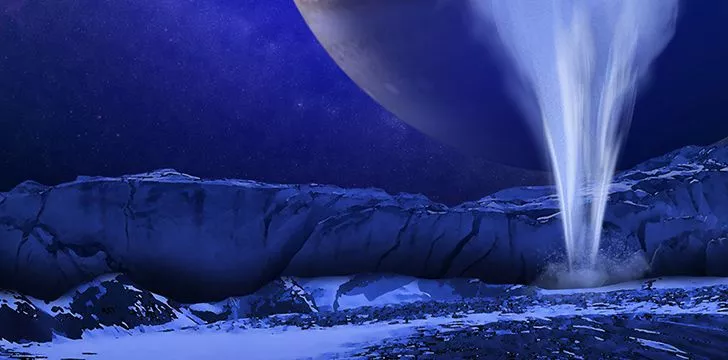
Not only does Triton have ice volcanoes, it also has nitrogen geysers. This form of geyser is not all that different from those found on our very own planet.
On Earth, Geysers can be found in regions with volcanic activity, where searing hot magma heats a natural pool of water, creating a hot spring.
Occasionally the water underground is heated so much by the magma that it turns into steam. This steam then erupts out of the hot springs, shooting a jet of steam and hot air with it.
Triton’s geysers are somewhat different, as instead of steam and boiling water they spew out nitrogen. The way this happens is a different process, too.
Triton’s nitrogen geysers are found at the its sub-solar point, where the sun’s rays are the most concentrated.
In this region the layer of frozen nitrogen that coats the moon is melted by the heat of the sun’s rays to such a temperature that not only does the nitrogen start to melt under the surface, but it starts boiling!
This steaming nitrogen then builds up to a point that it erupts through the frozen crust, shooting nitrogen and ammonia high up into the moon’s atmosphere!
That’s not all though: it’s theorized that these eruptions could last as long as one earth year!
In Conclusion
These five facts are just some of the many fascinating and bizarre things we know about Triton, and most of them were obtained from a flyby by Voyager 2 in 1989.
If you think about it, we learned all of this from equipment available back in 1989, when your average home computer used floppy disks that stored a maximum of 1.2mb of data!
Just imagine what we would find out if we were to send another mission all the way out to far the edge of our solar system!
